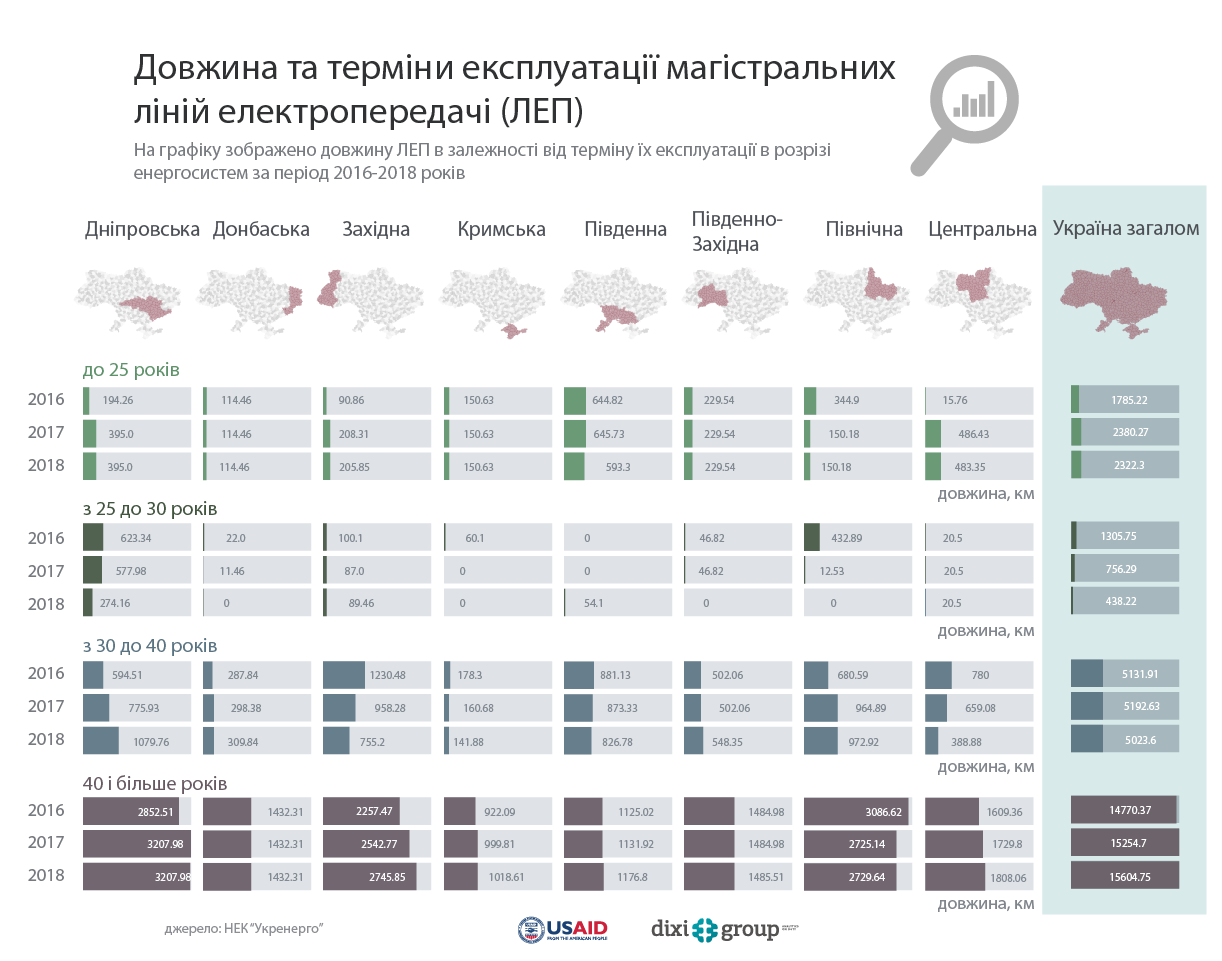Over 60% of Ukrenergo’s overhead power lines are more than 40 years old
Is there a threat to the sustainable performance of the power system?
Over 60% of overhead power lines in Ukrenergo NPC’s trunk electricity networks are more than 40 years old. This is the data for 2018 published by the company. Does this situation threaten the sustainable performance of the power system and electricity supply to consumers?
According to Ukrenergo NPC’s commentaries to Ukrainian Energy, the estimated service life of 220-750 kV overhead power lines (OPLs) is 50 years.
“During this period, OPLs undergo at least five major overhauls (once every 10 years), and if technical condition requires so, we may repair certain structural elements or even the entire structures, including power cables,” the company’s representative assures.
As the Online Map of Ukraine’s Energy Sector shows , the total length of overhead power lines in electrical grids is almost 23.4 thousand km, of which 66.7%, or 15.6 thousand km, are more than 40 years old.
The next-largest category includes power lines which have been in service between 30 and 40 years. Their length is over 5 thousand km, or 21.5% of the total length. The length of power lines which have been in service less than 25 years is 2.3 thousand km, or 9.9% of the total length.
The power lines which the company has the least of are the OPLs which have been operated between 25 and 30 years: 438.2 km (1.9% of the total length). Four power systems – Donbas, Crimean, South-Western and Northern – do not have these power lines at all.
More than 20% of lines older than 40 years are located in Dniprovska Power System (PS): 3.2 thousand km. They comprise almost 65% of all power lines in Dniprovska PS. Another 22% (over 1 thousand km) of OPLs in this power system have been in use between 30 and 40 years.
Western and Northern Power Systems have 17.6% and 17.5%, respectively, of power lines in operation for over 40 years (2.7 thousand km each).
MORE INFORMATION ABOUT THE ENERGY SECTOR IS AVAILABLE ON THE ONLINE MAP OF UKRAINE’S ENERGY SECTOR
Ukrenergo explains that 220-750 kV trunk power grids have been designed and built to transmit electricity over large distances while reducing electricity loss.
“The higher voltage class of a power line, the higher electric power it can transmit,” the company clarifies. It is worth noting that electricity loss in a power line depends, first of all, on the following factors:
• the value of electric current flowing in it;
• power line’s voltage class;
• voltage levels (for a particular voltage class);
• assembly of conductors in a phase (number of conductors in a split phase and transposition of phases);
• weather conditions (fog, icing, rain or wet snow);
• condition of linear insulation.
To reduce electricity loss in power lines, the company regulates voltage level in a power grid; redistributes active power transmitted via trunk electricity networks over different voltage classes; turns off automatic transformers into backup mode when electric loads are insignificant; shortens the duration of repairs on major equipment of electricity networks.









